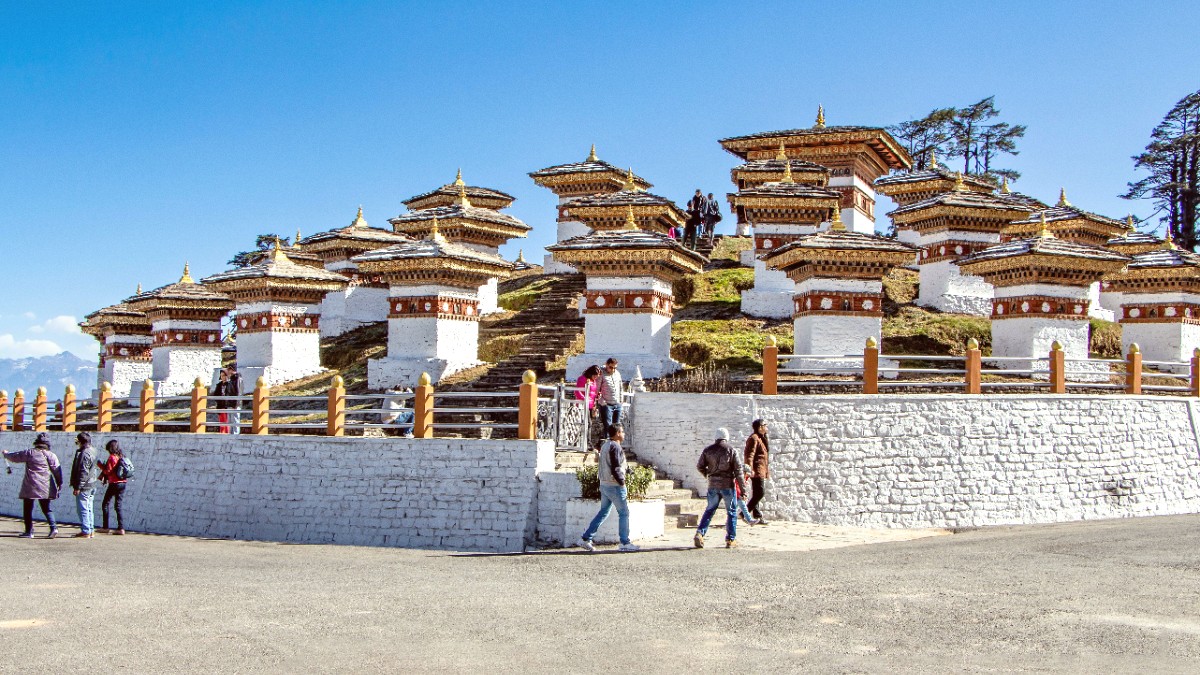
Bhutan
Thimphu offers a window into Bhutan’s soul. It presents a captivating mix of the historic and the contemporary, all within a valley ringed by towering peaks. Travelers seeking more than a destination but a genuine cultural encounter find Thimphu delivers an experience rooted in peace and reverence. Prepare for a journey that engages your senses, calms your spirit, and connects you with a culture that values well-being above all else. This guide contains practical steps for planning your visit to this remarkable city.
Thimphu began as a small rural settlement, a modest collection of homes and fields in a fertile valley. Its transformation into a capital city marks a remarkable chapter in Bhutanese history. In 1955, it began serving as the winter capital for Bhutan’s monastic body, a recognition of its growing importance. This informal role became official in 1961 when the Third King, Jigme Dorji Wangchuck, formally declared Thimphu the nation's capital. This decision marked a shift towards greater centralization and modernization for Bhutan, though always at its own measured pace.
One of Thimphu’s most interesting historical facts relates to traffic control. It is the only capital city in the world without traffic lights. Instead of relying on automated signals, traffic police officers direct vehicles at major intersections with precise, almost balletic, hand gestures. This reflects Bhutan’s unique approach to development, favoring human interaction and tradition even amidst urban growth. It is a testament to the country’s desire to maintain its distinct identity. The city houses many important religious and government buildings. Tashichho Dzong, an imposing fortress-monastery, acts as the seat of the government, the central monastic body, and the summer residence of the Chief Abbot (Je Khenpo). This building connects the past with the present, embodying the dual system of governance that has guided Bhutan for centuries. Thimphu's history is not just about political decisions; it is about a nation carefully balancing its rich heritage with progress.
Thimphu presents an unique urban experience, unlike capital cities found elsewhere in the world. It combines traditional Bhutanese architecture, Buddhist cultural practices, and contemporary life. The city maintains a relatively relaxed pace, mirroring the broader Bhutanese philosophy of well-being. Here, you discover a distinctive atmosphere where spirituality and daily routines intertwine.
The cityscape presents colorful buildings adorned with traditional motifs, prayer flags fluttering on hillsides, and the grand presence of dzongs and monasteries. Streets are generally clean and orderly, with a noticeable absence of chaotic traffic typically found in many Asian cities. The people of Thimphu often wear traditional dress, the gho for men and kira for women, adding to the city's unique visual character. This reflects a constant cultural pride that permeates Bhutanese society.
Declared in 1961 by Third King Jigme Dorji Wangchuck.
The world's only capital city without traffic lights; traffic officers direct flow.
Blends ancient traditions with measured modernity.
Tashichho Dzong holds government and monastic body.
Relaxed pace, reflecting well-being philosophy.
Thimphu serves as a cultural and economic hub, yet it keeps a small-town charm. You find local markets bustling with fresh produce, small shops selling Bhutanese handicrafts, and cafes offering a quiet respite. The city is also a center for education and government, attracting people from all over Bhutan. Visitors discover that Thimphu, while being the largest urban area, still feels deeply connected to its natural surroundings and its spiritual roots. It offers a calm, contemplative environment that encourages exploration and reflection. This overview contains details on planning your visit, exploring attractions, and understanding the local way of life.
Thimphu’s buildings showcase traditional Bhutanese designs, making the cityscape visually appealing and culturally rich.
Prayer flags and the presence of dzongs and monasteries foster a spiritual atmosphere throughout the city.
Thimphu provides an unique insight into a nation that prioritizes Gross National Happiness and cultural preservation over rapid development.
Thimphu offers a distinctive charm for visitors. The city’s calm pace allows for immersion in local life, unlike the hurried nature of many other capitals. Interactions with locals often involve polite greetings and a shared sense of peace. The unique absence of traffic lights is a testament to Bhutan's measured modernization, emphasizing human connection over automation.
Every corner of Thimphu presents an opportunity for quiet reflection. From the grand Tashichho Dzong to the simple beauty of a prayer wheel, the city’s spiritual essence is ever-present. This calm environment, combined with Bhutan’s policy of 'High Value, Low Impact' tourism, means visitors experience a country focused on authenticity and sustainability. It's a journey not just to a place, but into a philosophy.
Experience the deep spiritual roots that weave through daily life in Thimphu, from dzongs to local interactions.
Engage with friendly locals and witness traditional customs, creating memorable cultural encounters.
Enjoy crisp mountain air and panoramic views of the valley surrounded by lush, forested hills.
Bhutan operates under a 'High Value, Low Impact' tourism policy. This approach limits the number of tourists and focuses on sustainability, cultural preservation, and a high-quality visitor experience. The Sustainable Development Fee (SDF) is central to this strategy.
Thimphu’s gentle rhythm offers a chance to truly unwind. Slow down, observe, and absorb the unique ambiance.
This mindful approach to travel enriches your visit.